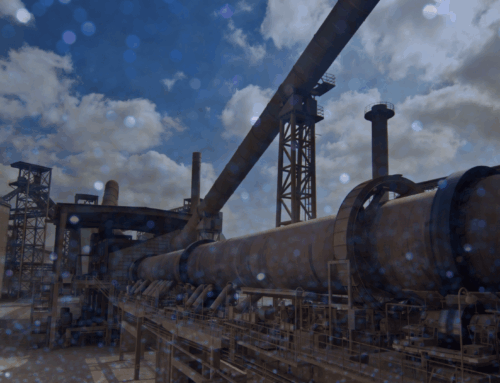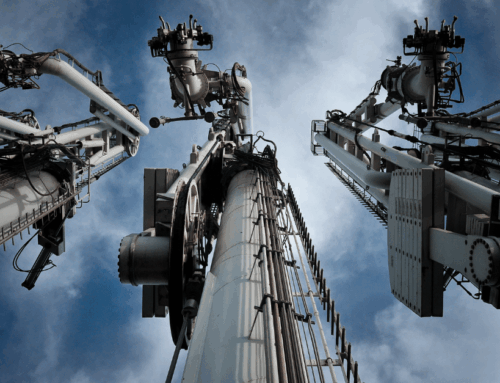A large chemical organization uses HanPHI. With the advanced predictive analytics solution, they detect hidden and potential failures and prioritize maintenance to avoid unplanned shutdowns. Before HanPHI, the organization sought predictive maintenance software. They wanted to improve productivity and production by leveraging equipment sensor data and machine learning. Here is the story of introducing HanPHI, an AI-based predictive maintenance solution, into their chemical operations.
The Challenges
-
Unnecessary Downtime and Incomplete Root-Cause Analysis
The organization had an existing facility monitoring system used by members on-site to monitor the systems. Their existing solution provided the users with the current and past status of the site and equipment. Unfortunately, it did not provide insight into a potential failure or what was causing an issue. As a result, the organization did not have the necessary information to identify potential failures early and keep them from happening now or in the future.
For example, the organization had an issue with its bulkhead, a necessary part for production inside the reactor. When the issue occurred, Operations and Maintenance (O&M) took various measurements from the outside to determine the cause of the failure. The measurements after the failure gave them some indication of the issue. However, they were unable to verify the true cause of the failure as they could not physically look inside. As a result, the plant not only lost production yield when the equipment was down, but it also did not eliminate the root cause of the issue, meaning the failure could happen again.
With the limitations of their existing monitoring system, the organization wanted to accurately identify equipment anomalies to give them more time to fix equipment and maximize production yields. To do this, the organization looked for a solution that would accurately locate abnormal equipment by analyzing sensor data generated from the site continuously.
-
Communication Gaps between Field and Management
The organization did not have an effective and easy method to know the current equipment condition off-site. To know equipment conditions, a manager would have to receive a report from someone on-site or directly visit the site to view the distributed control system (DCS) or the process status monitoring system. Beyond access outside the site, there were also outdated Programmable Logic Controllers (PLCs) that did not connect to the system and required a person to measure and record the data.
The lack of easy data access made it difficult to know the status of the equipment as well as collaborate across teams and locations. Too much time, energy, and resources were spent on getting the necessary data for evaluation and analysis. As a result, this leader in the chemical industry looked for a solution that would provide them with the right information at the right time to the right people so that they could spend more time on analysis and improvement.
The Solution and Benefits
This leader in the chemical industry chose HanPHI, an AI-based smart predictive maintenance solution, to detect and notify users of potential and hidden failures of equipment in advance. With HanPHI’s machine learning algorithm technology, the organization avoids catastrophic accidents and minimizes losses avoids by securing sufficient lead time before an actual failure occurs. Starting with their boilers, the organization has since expanded HanPHI to its chemical production equipment.
Changes After the Introduction of HanPHI
-
Secure Sufficient Time for Action
By quickly and accurately detecting equipment abnormalities in advance, the site has more lead time to plan, prioritize, and act. Though all layers of the organization have access to HanPHI’s insight, the organization appointed a HanPHI Champion. The HanPHI Champion actively monitors the facility status in real time with HanPHI.
The Champion uses HanPHI’s intuitive health index to understand the health status of the entire plant and specific systems. With HanPHI’s SuccessTree, a hierarchical representation of the plant to the sensor level, the Champion quickly identifies the root cause of the equipment degradation. When the Champion identified the source of the anomaly, the Champion, subject matter experts (SMEs), and O&M had the necessary lead time to take proper action.
-
Active Communication Across the Organization
After the introduction of HanPHI, the organization saw a drastic improvement in communication. Not only is communication more active, but it is also supported by data-driven insights. By being able to access facility data at headquarters and in the field, the reliability manager can easily find an abnormality in the facility and notify the field team to act. With more people able to see the data, the team has more actionable intelligence to make plant operations more effective.
In addition, as a leader in the chemical and life science fields, this large chemical organization understood that to continue to be innovative, it needed to embrace the concept of becoming a digital organization. Prior to the implementation of HanPHI, the organization developed a branch dedicated to digital transformation. Additionally, with this team dedicated to digitalization, the chemical organization leverages enterprise-wide solutions to increase corporate performance. After the implementation of HanPHI, the branch uses the elevated level of on-site understanding to support new businesses and build a digital plant.
-
Continued Focus on System Security
The organization needed early warnings of potential failures. But this could not come at the cost of the security of their sites. To ensure a high level of security, the organization implemented HanPHI in a three-tier system structure. This structure divides the system into three layers to build and operate in separate logical/physical devices. As a result, when accessing HanPHI information from headquarters, there is no direct access to the factory network. With HanPHI, the organization can safely and securely monitor the equipment.
Continued Value
Beyond the current benefits, this chemical organization continues to identify new ways to improve operations and maintenance. In fact, the organization holds regular meetings to discuss new ways to use HanPHI’s insights and how to improve processes to incorporate HanPHI’s findings into day-to-day operations.
Learn More
Contact us to find success utilizing our solutions as our customers have been for years. We are one phone call away from helping you break through the limitations and become a model of operational excellence.
HanAra Success Stories
Beyond Reactive Maintenance: A Smarter Approach to Wind Farm Operations
Wind energy has established itself as a reliable renewable power source across the globe. But maintaining a fleet of turbines presents different challenges compared to traditional, centralized power generation facilities. Some of the operational [...]
Biomass Plant Enhances Operational Excellence with HanPrism
In the renewable energy sector, biomass facilities face increasingly complex operational challenges that require sophisticated data management solutions. For one facility, growing compliance requirements and the desire for operational improvement led them to seek [...]
Embracing Change: How a District Energy Organization Transformed Their Data Management with HanPrism
In the world of organizational operations, the concept of "buy-it-for-life" is a rare luxury. While organizations strive for longevity in their tools and solutions, the reality is that technology evolves and so must the [...]









